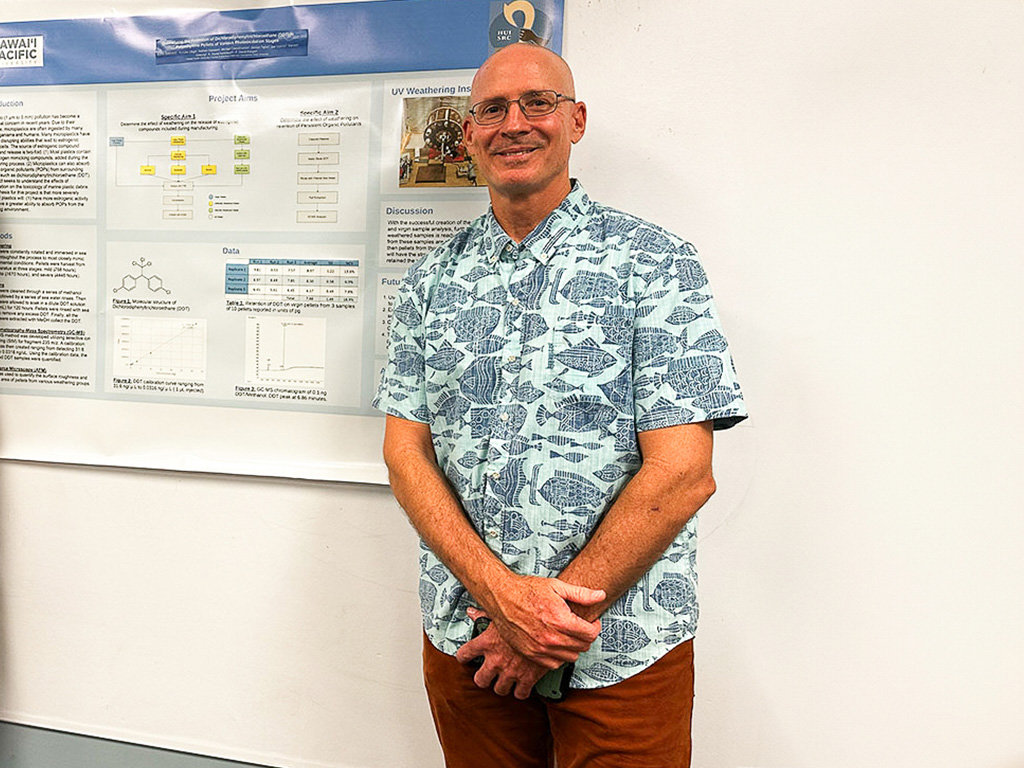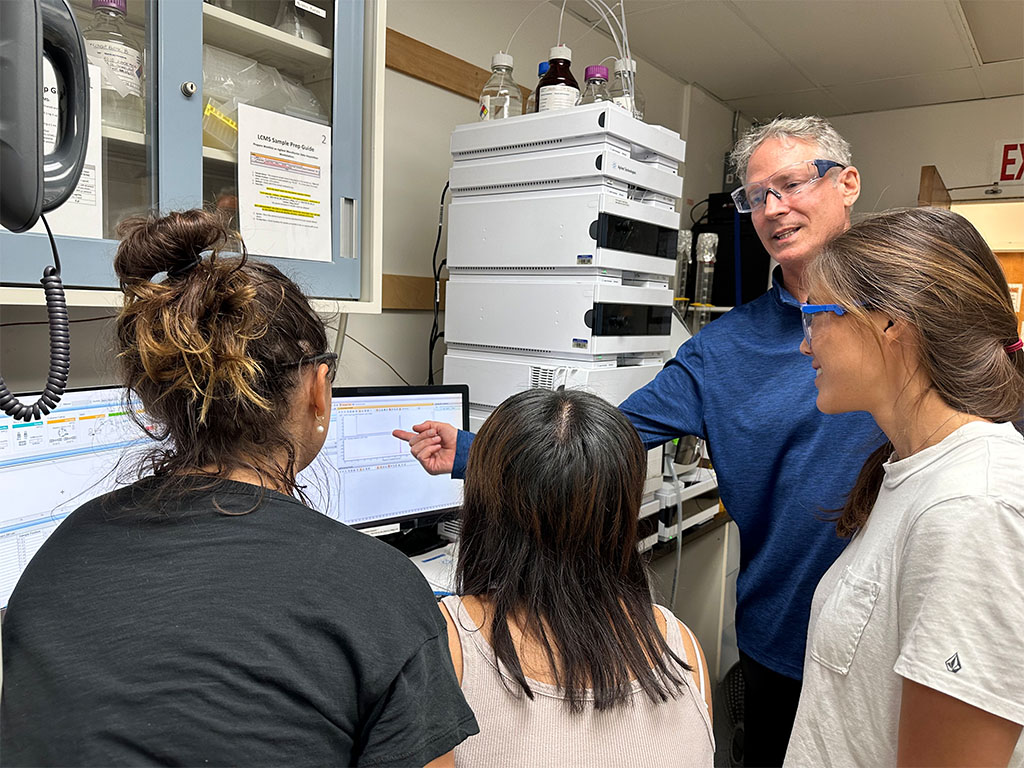HPU has made progress in the development of a new drug to treat hypoxic-ischemic brain injury in newborn babies. In a new research paper co-written by HPU Chemistry Professor David Horgen, Ph.D., and four HPU alumni co-authors, researchers have identified compounds in the Hawaiian soft coral Sarcothelia edmondsoni that can block a specific ion channel in brain cells. Horgen and his collaborators hypothesize that these compounds, called waixenicin, work by forming bonds to the TRPM7 ion channel protein, blocking its function. Slowing the TRPM7 ion channel may be effective in helping to treat infants suffering from a temporary lack of oxygen that leads to brain injury.
“In essence, we are trying to save babies,” said Horgen. “The research we are doing in partnership with the University of Toronto, Baylor University, and The Queen’s Medical Center has great potential to create an effective drug to infants suffering from a hypoxic event and to complement the only existing therapy which is to reduce a newborn’s body temperature. This research may also lead to treatments for adults who suffer from a stroke.”

Sarcothelia edmondsoni, a soft coral that only grows in Hawai'i, seen with tropical fish (photo by Oliver Koning).
HPU and its partners received a grant from the National Institute of Neurological Disorders and Stroke in 2023 to research and develop the drug. The two-year grant includes a third contingent year that puts the award over $1 million. Horgen is the co-principal investigator and serves as project coordinator on the grant.
Chemical characterization and analyses of potential drugs developed under the $1 million grant will be conducted in the new HPU Fort Street Mall Laboratories, scheduled to open in August 2024. HPU students will have access to cutting-edge technology, and professors will have the ability to work closely with students in the new four-story lab space.
The significance of the funded project is based on the fact that perinatal and neonatal hypoxic-ischemic brain injury (HIBI) occurs in two out of every 1,000 births in the U.S. and it is a major cause of acute mortality and chronic neurological morbidity in infants, leading to serious disorders such as hypoxic-ischemic encephalopathy (HIE) and cerebral palsy.
Horgen explained that the TRPM7 protein can become upregulated and overactive during these events in newborns, causing a cascade of changes in the brain and leading to the death of brain cells. “Blocking TRPM7 or putting the brakes on before the damage is triggered will help prevent brain damage,” he said. “The damage happens because the brain cells get overloaded by calcium, and when cells are overloaded, they need to pump it out as fast as they can. Eventually, cells run out of energy, exhausting themselves and eventually dying. When this happens, it causes nearby cells to overload with calcium and die—a domino effect. Our research seeks to cut this process off early, blocking one critical path for calcium to enter into the cells.”
Horgen and his team are also working with other collaborators at certain breast cancers, where TRPM7 protein levels are high and associated with a cancer’s potential to metastasize. “A new drug could potentially lower the activity of the protein and reduce the chance of tumors spreading in the body,” he said.




